FPI Instruments
Palmer Station FPI
The Palmer Fabry Perot interferometer (FPI) measures the mesospheric and thermospheric winds by monitoring the wind induced Doppler shift in the nightglow emissions. Nightglows are lights emitted by atmospheric atoms such as O and molecules (e.g. OH). These atoms and molecules gain energy by either chemical reactions or collisions with electrons in the ionosphere. One way to release their extra energy is to emit light. Different emissions come from different molecules and atoms at various altitudes. Because the atoms and molecules are moving with the winds, their emissions are Doppler shifted. By selecting the appropriate emission lines and measuring their Doppler shift; a ground-based instrument can obtain wind information at different heights.
The FPI is a high-resolution spectrometer capable of detecting small wavelength shifts. Mesospheric and thermospheric winds are on the order of 10s to 100 m/s, which is much smaller than the speed of light. Hence, the Doppler shifts induced by these winds are of order 1/106 of the wavelength. The FPI at Palmer station can resolve changes as small as 1 in 108 of the wavelength, which means wind accuracy of a few m/s. That is sufficient for the upper atmosphere wind observations.
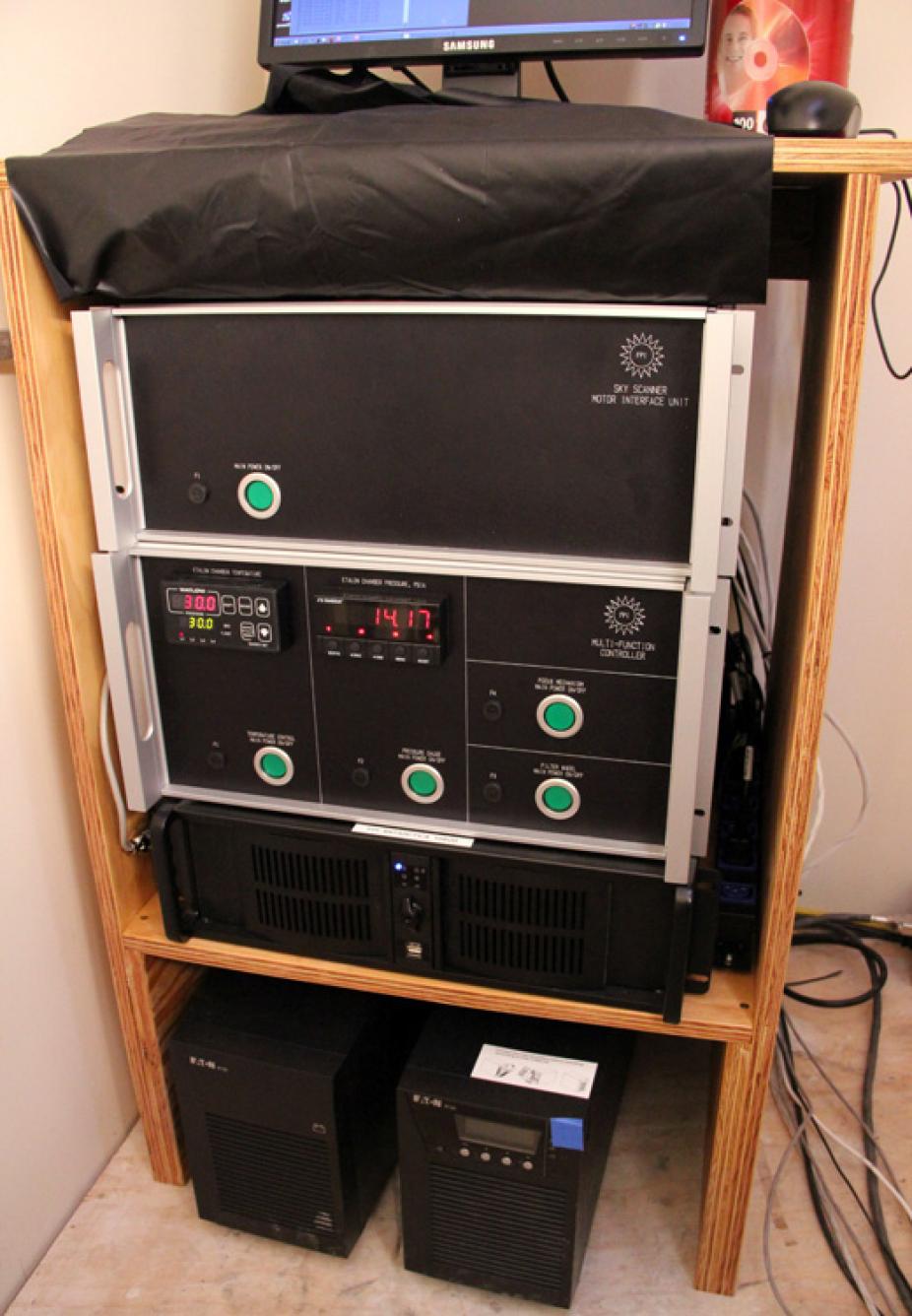
Control electronics.
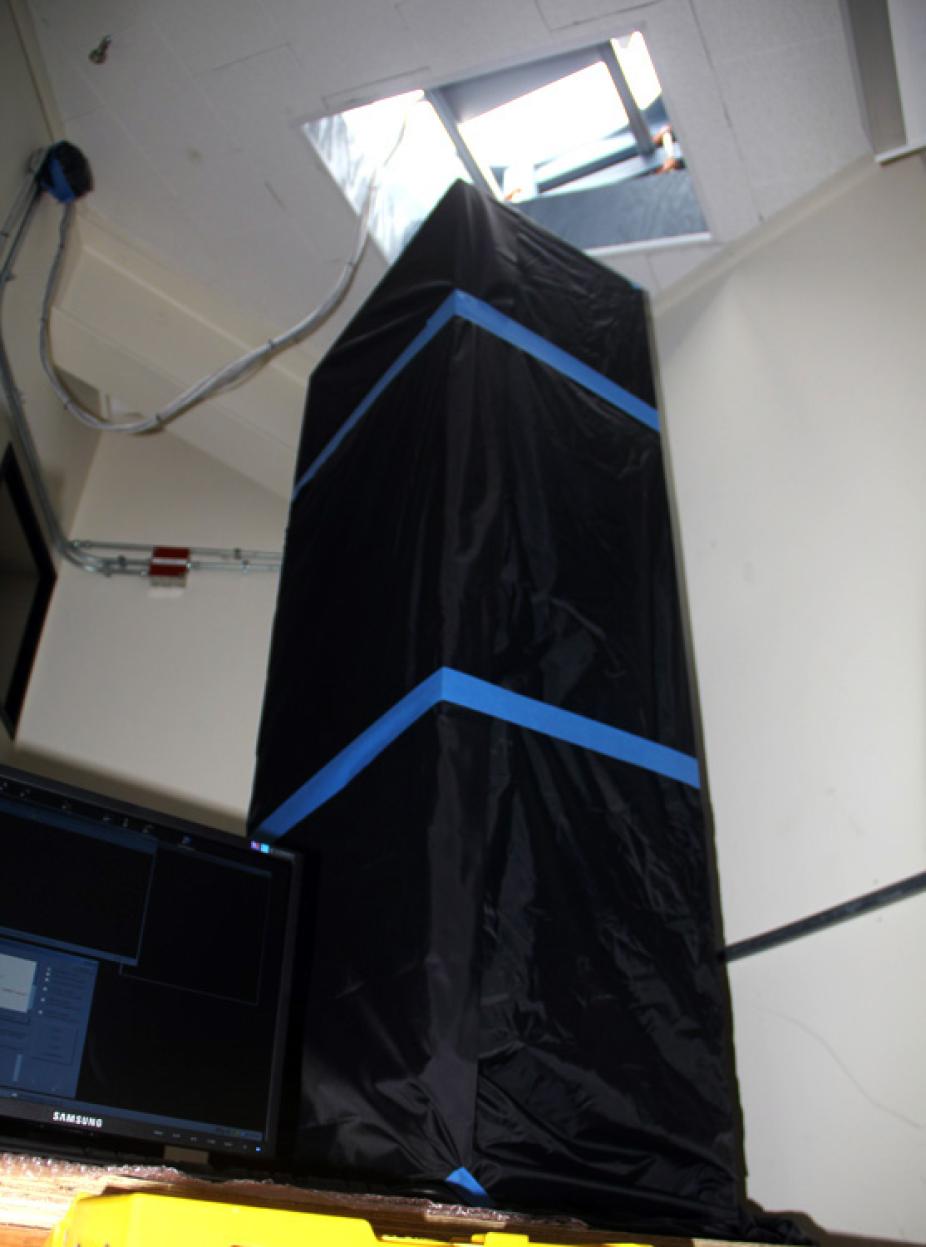
Instrument tower.
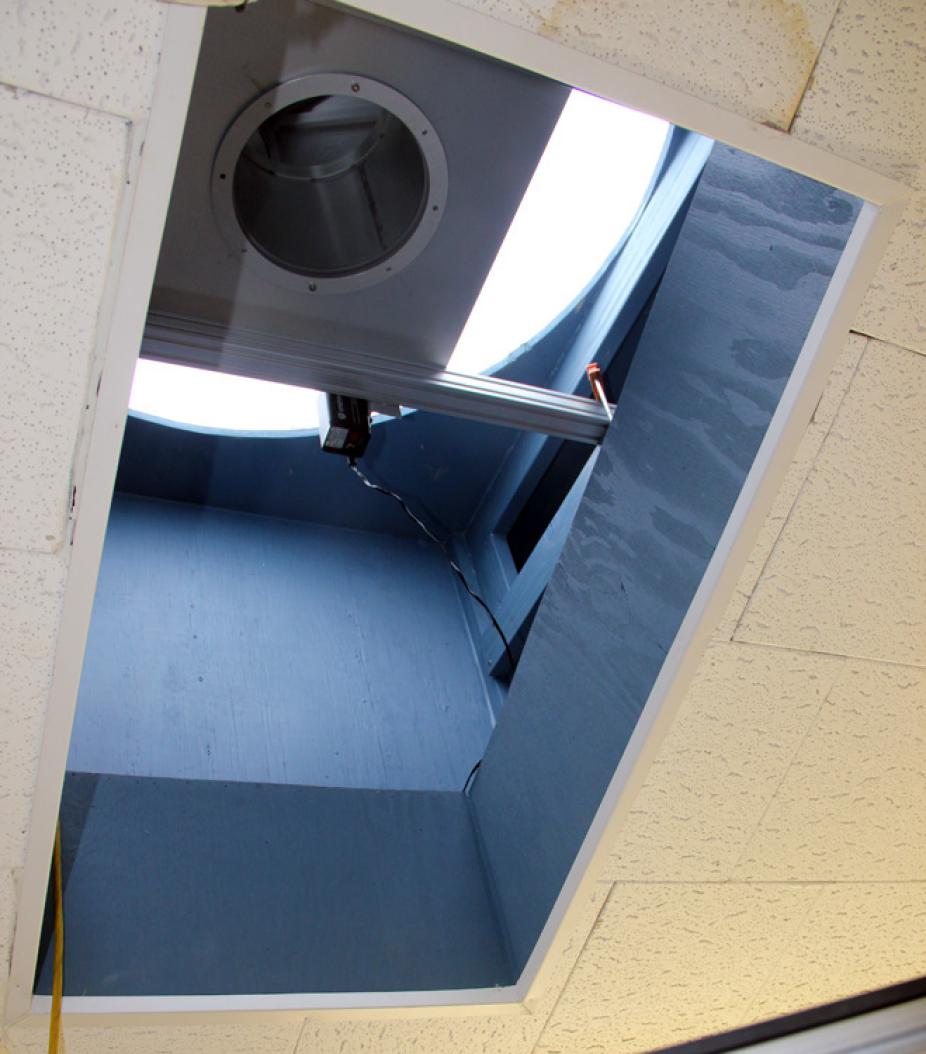
Sky scanner from below.
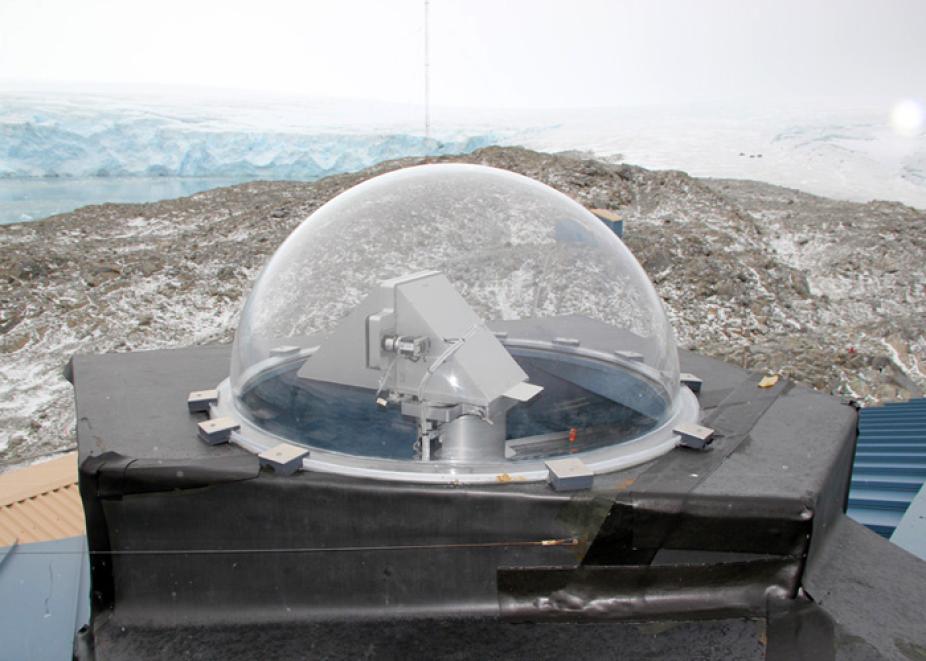
Palmer FPI sky scanner from above.
The FPI has a 10 cm clear aperture etalon with 2 cm gap. It has a sky scanner (two rotating mirrors), which allows pointing at any direction in the sky. There is a filter wheel, which has three filters for OH 892.0 nm, O 557.7 nm and 630.0 nm nightglow emissions. These emissions are from 87, 97, and 250 km altitudes. The integration times for the three emissions are 3, 3, and 5 minutes. The instrument operates every night and automatically starts after sunset and stops before sunrise. The data are transferred to NCAR to be processed, analyzed and distributed.
Resolute Bay FPI
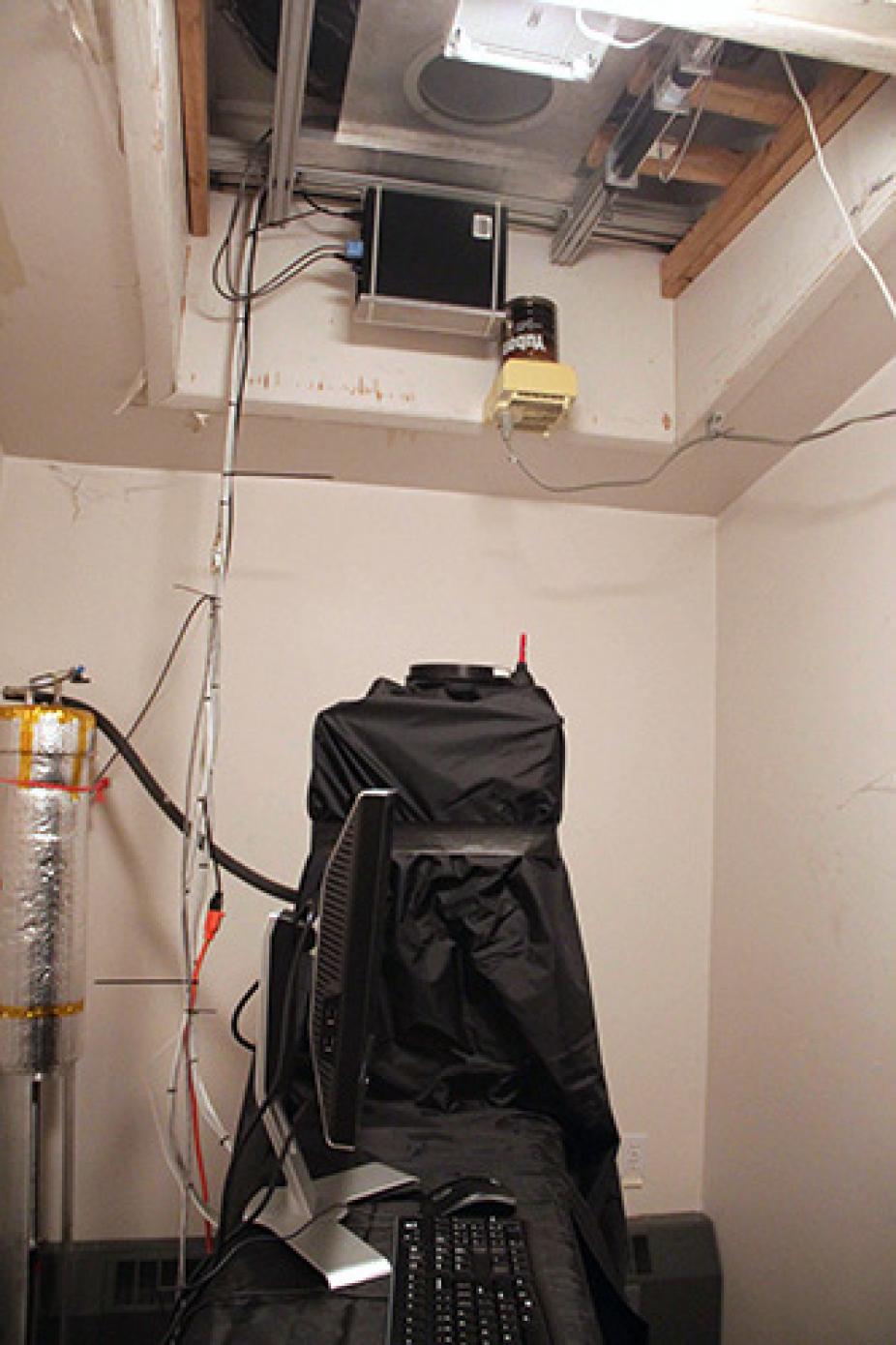
Resolute FPI instrument.

Qian Wu in the Resolute Station control room
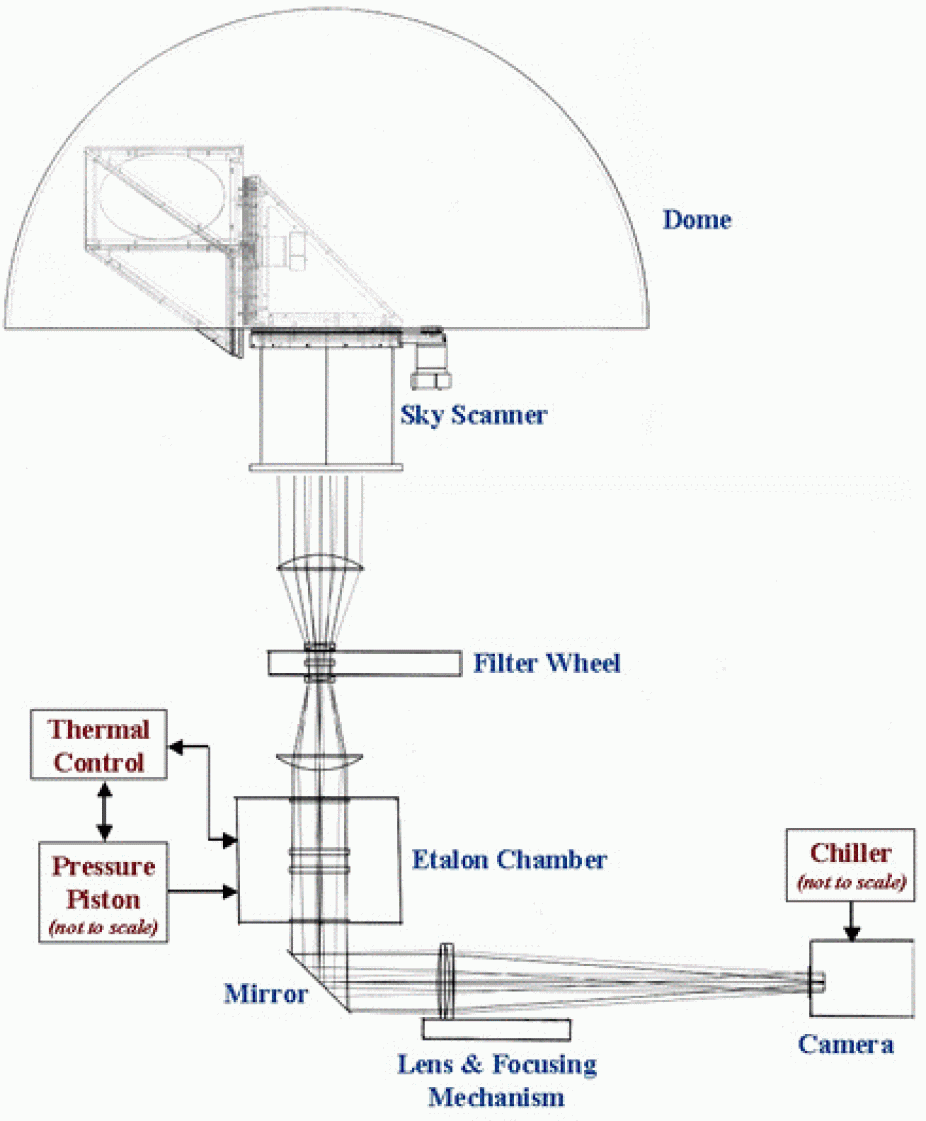
FPI schematic.
Major Components
Sky scanner
Filters & filter wheel
Etalon & chamber
Thermal & pressure control
Focusing lens
Detector
Computer system
Highlights
Computerized micrometer
Daily laser calibration
High degree automation
Michigan heritage
Operational Mode
| Emission | Integration time | Wind Errors | Altitude |
| OH 8920 A | 3 minutes | 6 m/s | 87 km |
| O 5577 A | 3 minutes | 1 m/s | 97 km |
| O 6300 A | 5 minutes | 2-6 m/s | 250 km |
Boulder FPI
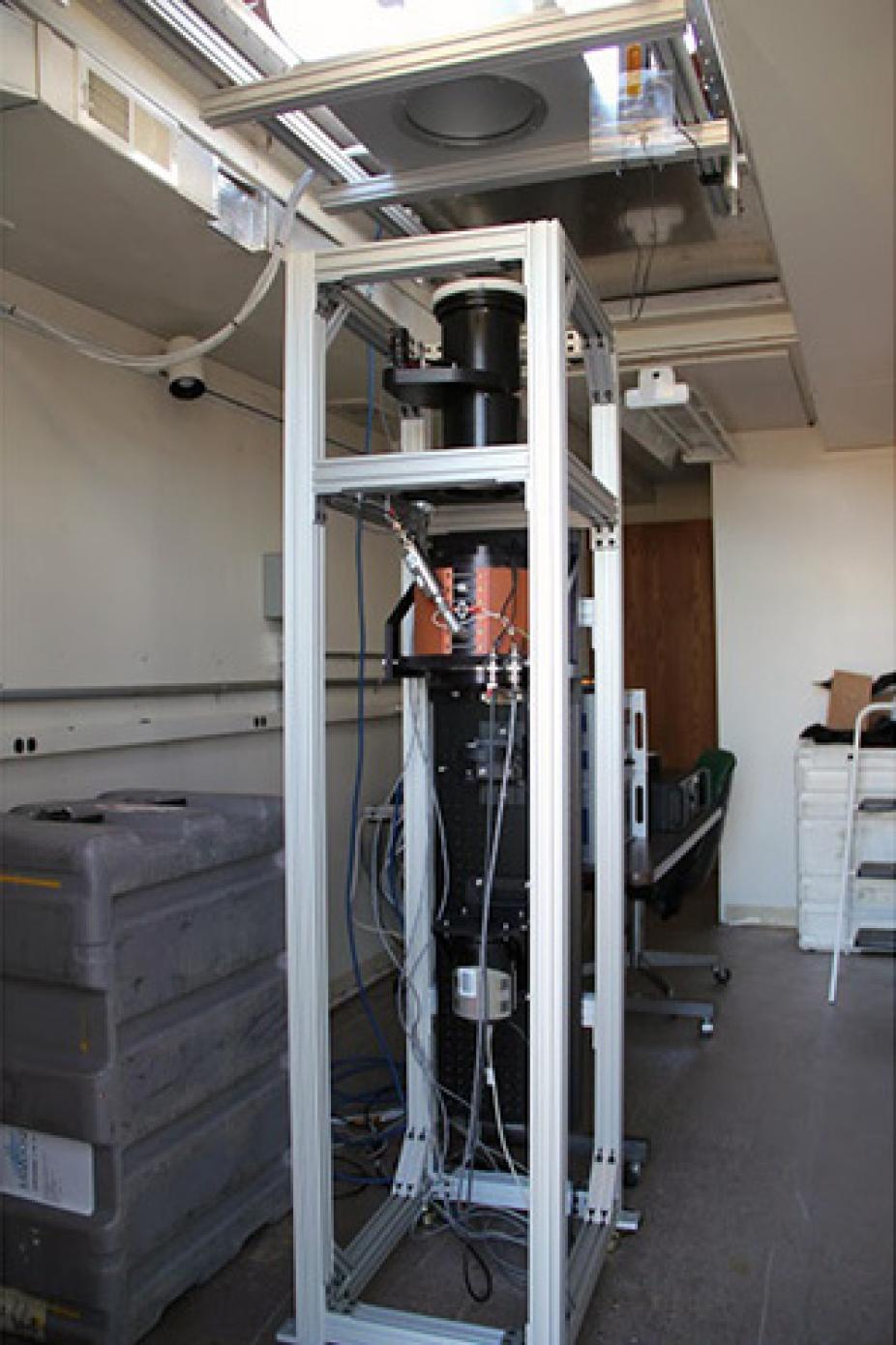
Boulder FPI instrument
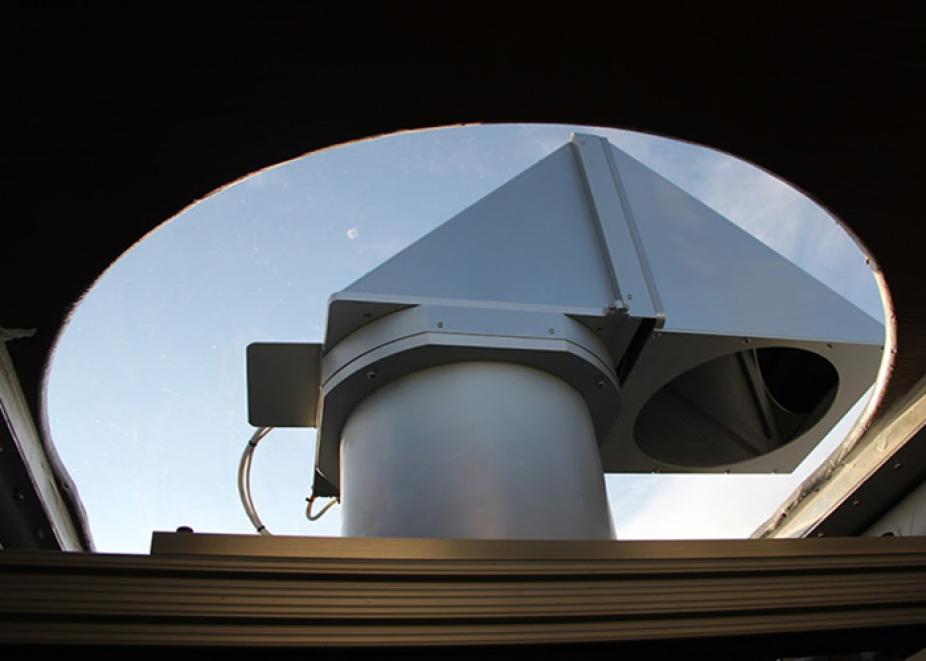
Boulder FPI sky scanner.
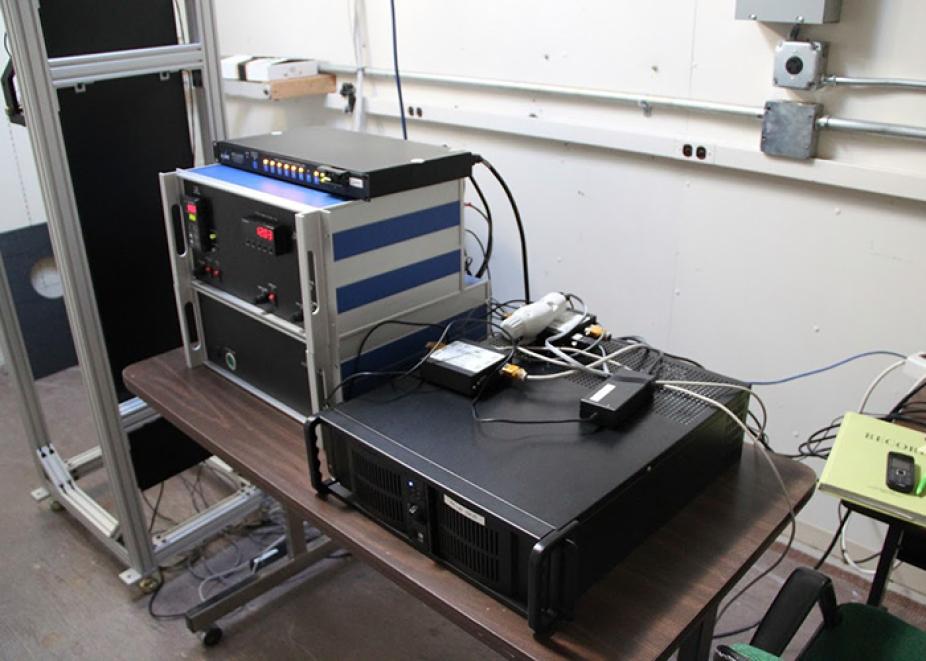
Boulder FPI control room.